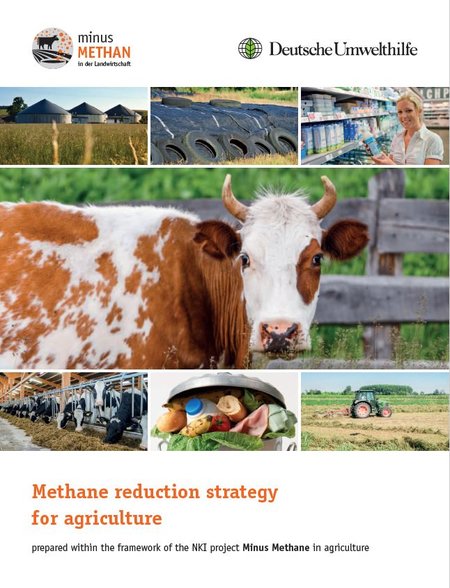
Sources of Ammonia and Methane from Agriculture
In Europe, agriculture is responsible for about 50 percent of methane and 90 percent of ammonia emissions.
Methane
The formation of methane (CH4) is an important process in the global carbon cycle. Methane is the main component of natural gas and is present as a gas hydrate in marine and permafrost soils. In addition, methane is produced during rotting and fermentation processes under anaerobic conditions without oxygen supply. Preferred habitats for methanogenic bacteria and thus natural methane sources are the stomachs of ruminants. Enteric fermentation makes up for 4 percent of European greenhouse gas emissions. In 2016, the rearing of ruminants was responsible for 81 percent of methane emissions and 37.5 percent of all greenhouse gases from agriculture. A further 17 percent escape during the storage and spreading of solid and liquid farm manure. The remaining 2 percent comes mainly from the fermentation of energy crops from biogas plants (source: Annual European Union greenhouse gas inventory 1990–2017 and inventory report 2019)
Ammonia
The pungent smelling gas ammonia (NH3) is produced during the natural degradation processes of proteins and urea in slurry and manure of farm animals. In Europe, about 90 percent of ammonia comes from agriculture. It is released mainly in stables and storages of manure as well as on fields and grassland shortly after application of fertiliser. More than half of the emissions from animal husbandry come from cattle, followed by pig and poultry farming.
Since the invention of the Haber-Bosch process, fertilisers can also be produced synthetically. The application of urea-based fertiliser is a major source of ammonia with an increasing share in the past decade.
Emissions from fermentation residues have become increasingly significant due to the growing production of biogas in the past decade, so that today they account for about one fifth of agricultural ammonia emissions in Germany.
Minus Methane - Strategies to reduce emissions (DUH, 2019)
Read our background and strategy paper here.


